The river walk between Hammersmith Bridge and Putney is part of the Thames Path National Trail, which runs for 184 miles from the Cotswolds to the Thames Estuary.
It follows the route of the most famous rowing course in the world. The Oxford and Cambridge boat race which runs from Putney Bridge to Chiswick Bridge, has taken place along this stretch since 1845.
In this post you will find a map of the walk from Hammersmith to Putney, as well as information about points of interest you will pass. This guide follows the route along the north bank of the River Thames.
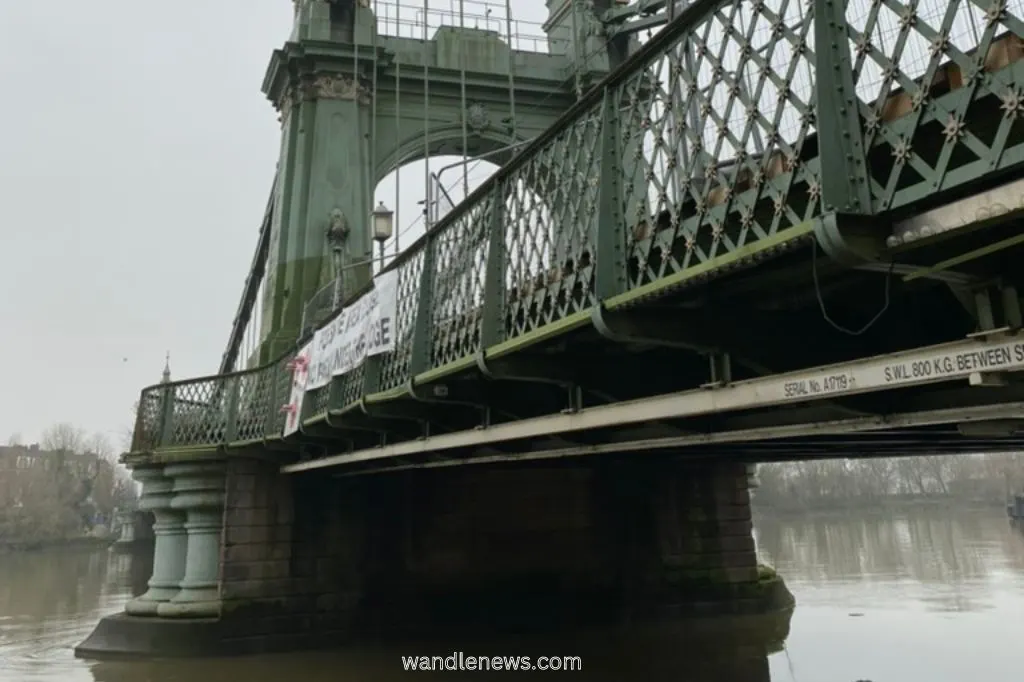
If you have a particular interest in wildlife or archeology, this would be a good walk to take.
During the low tide, the Thames river bed reveals a wealth of London’s archeology, as well as many river animals and birds. This part of the Thames is also one of the richest for small animals like shrimp.
At Hammersmith bridge, the difference between high and low tide can be as much as 7 metres. You can see the difference between high tide and low tide in the photograph below.
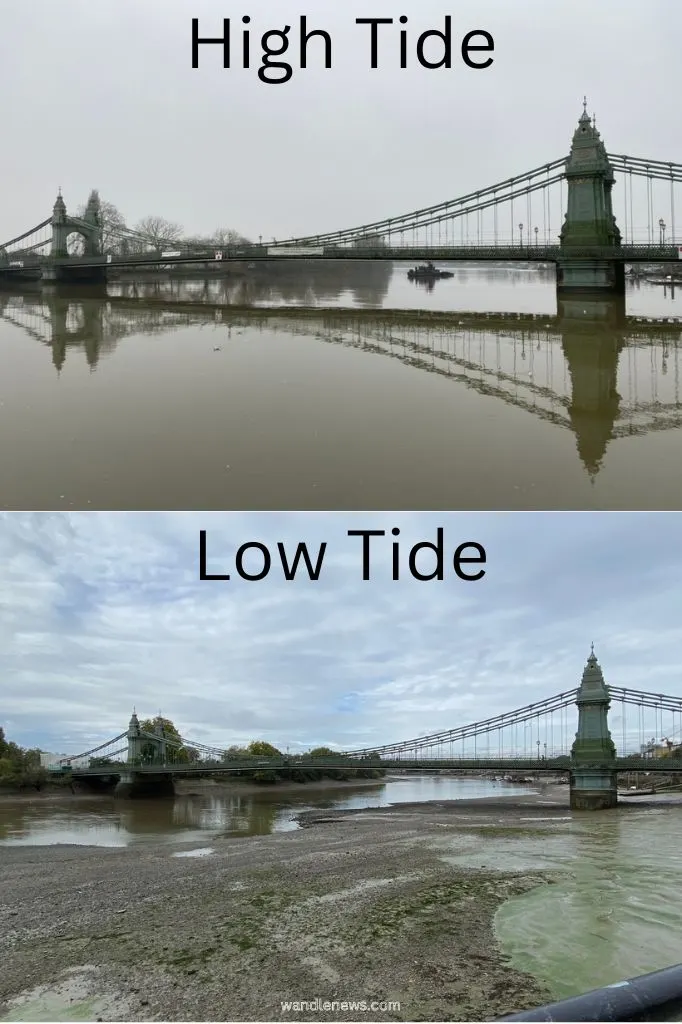
Map of the Thames Path from Hammersmith to Putney
Points of Interest Between Hammersmith and Putney
Hammersmith Bridge
Hammersmith Bridge first opened in 1887. It was the first bridge between Putney and Kew, and the first suspension bridge to be built over the River Thames.
It was built by William Tierney Clark who also designed the Chain Bridge in Budapest, which was the first bridge across the Danube.
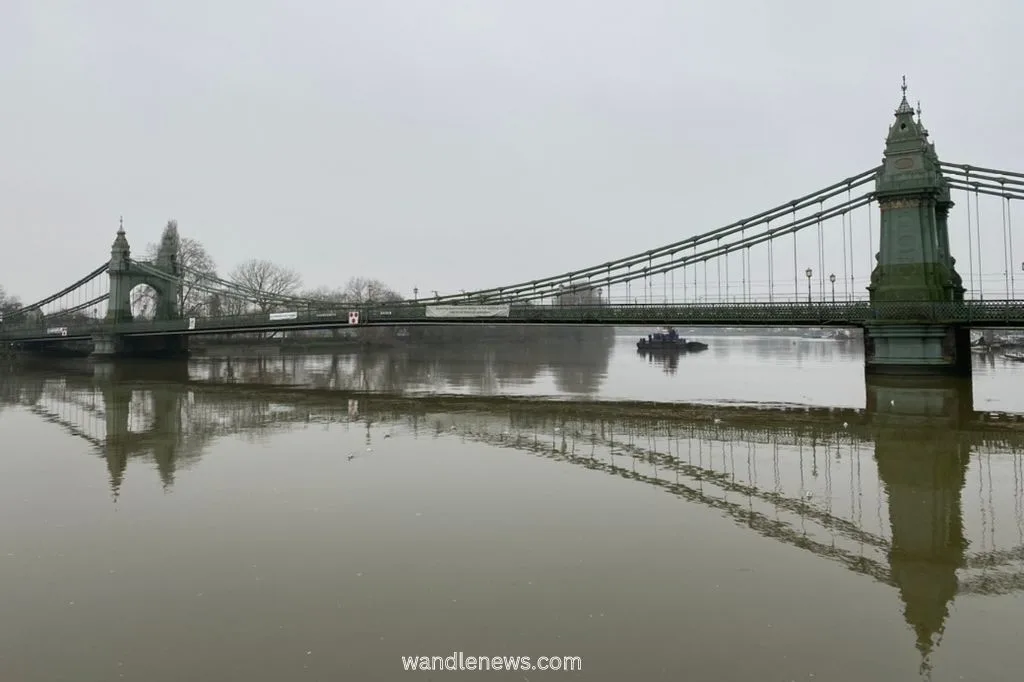
Riverside Studios
Just past Hammersmith Bridge you will find the famous Riverside Studios. The studios were first set up in the 1930s by the Triumph Film Company. Many well known films were made here including The Seventh Veil (1945), and Father Brown (1954).
From 1954 until the 1970s, the BBC used the studios to make many famous TV series including Dixon of Dock Green, Z Cars, and early episodes of Dr Who and Hancock’s Half Hour.
Today, Riverside Studios contains a cinema, two theatres and TV studios.
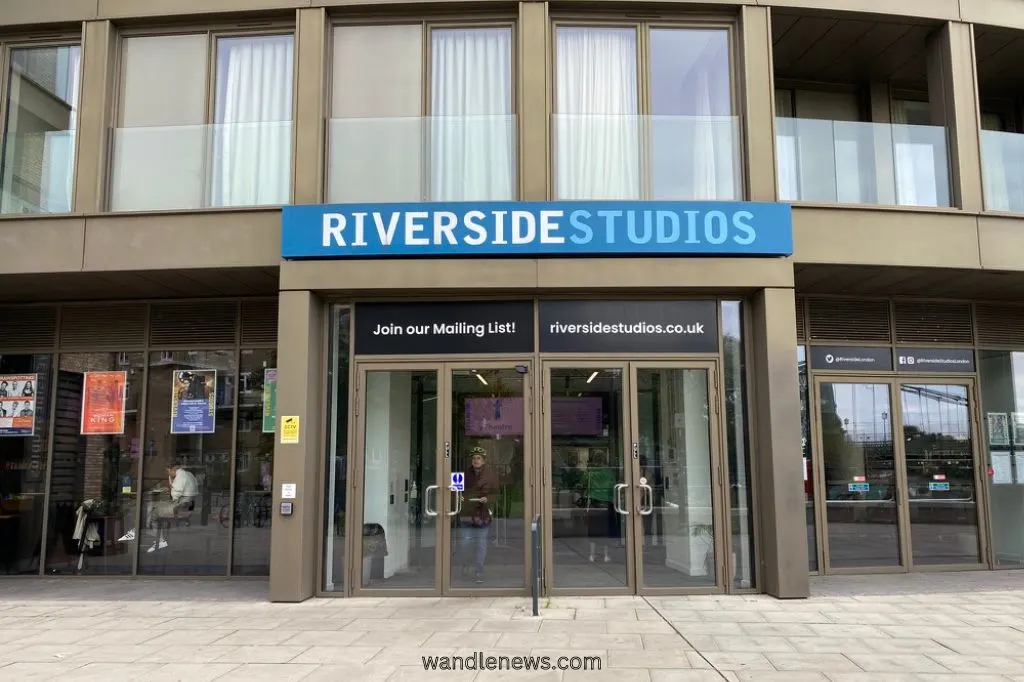
Site of Brandenburgh House
The former site of Brandenburgh House is marked on the map above. Brandenburgh House was a country house which belonged to a wealthy merchant and slave trader in the 17th century.
In the 18th century the house was rebuilt, and occupied by the Margravine of Anspach, who renamed it Brandenburgh House. Queen Caroline, wife of George IV lived here for a short time before she died in 1821.
When the riverside was industrialised in the 19th century, the house was demolished and replaced by a distillery and sugar factory. The factories closed in the 1970s.
River Cafe
The River Cafe is a famous cafe which opened in 1987, and became a Michelin star restaurant in 1997. It is notable for the number of famous chefs who have worked in its kitchen. They include Jamie Oliver, Hugh Fearnley-Whittingstall, Tobie Puttock, and Ben O’Donoghue.
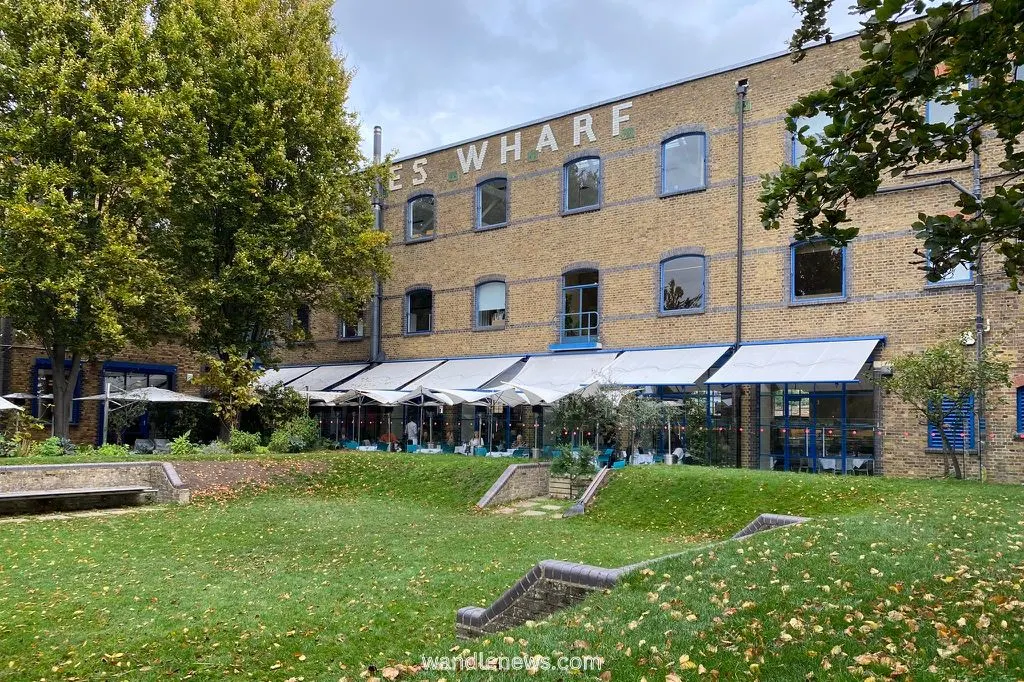
Former Harrods Furniture Depository
From the north side of the river, you can see the former Harrods Furniture Depository on the opposite bank.
The Harrods furniture depository buildings are a famous landmark in the Oxford and Cambridge boat race. They were built in 1914 for the Harrods store in Knightsbridge, using the same style and materials as the Knightsbridge store which was rebuilt in the same year.
When it was first built, it replaced the Cowan’s soap and candle factory, which was a major employer in the Barnes area until it was destroyed by a fire in 1888.
After the depository closed in the 1980s, the buildings were converted into apartment blocks.
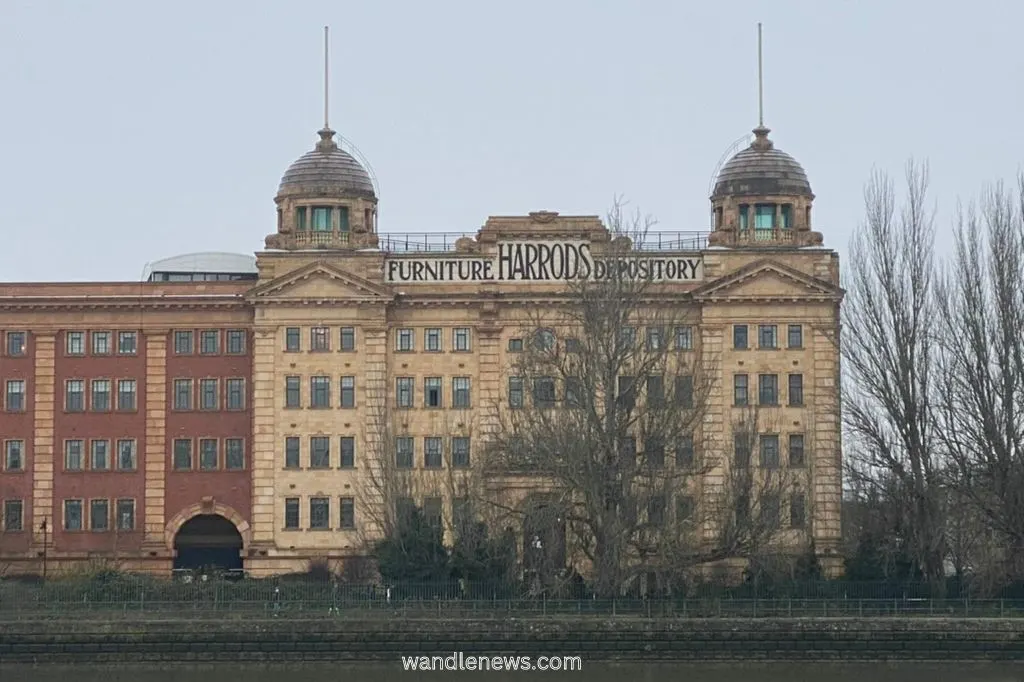
Crabtree Pub
This part of London was once a village known as Crabtree. It was named after a large crab tree that grew here. Today, the only sign left of the former village is the Crabtree pub which has stood on this spot since the eighteenth century.
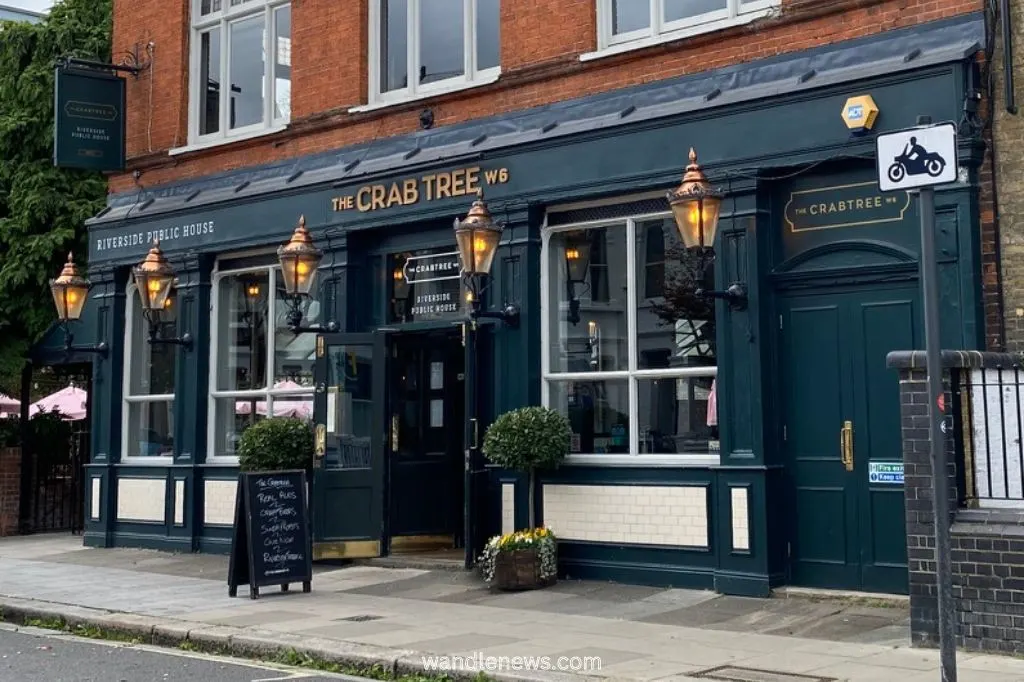
Fulham Football Club
The former site of Craven Cottage has been the home of Fulham Football Club since 1896. Craven Cottage was originally a country house built for the Countess of Craven in the 1770s.
Fulham Football Club bought Craven Cottage in 1894, and volunteers took two years to clear, and clean the area before the club house could be built.
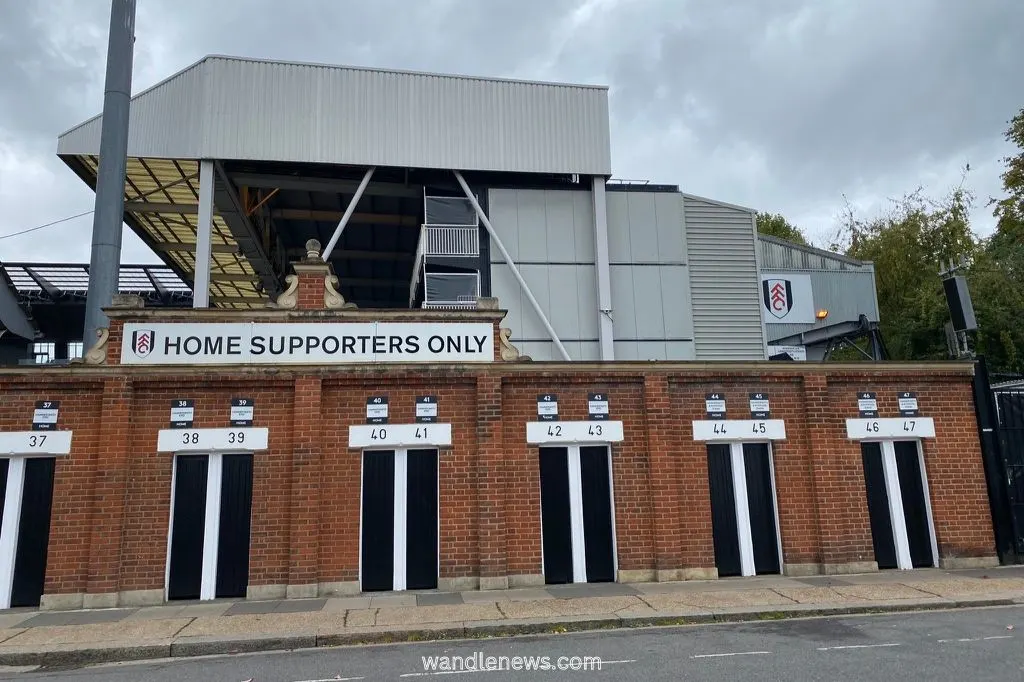
Bishops Park
Bishops Park opened in 1893, and includes land known as Bishop’s Walk, Bishop’s Meadow and West Meadow. The land was part of the gardens of Fulham Palace, which is the historic home of the Bishops of London. English Heritage have listed it as Grade II on the register of parks and gardens of special historical interest.
You will find many unusual trees in the park, which were originally planted by Bishop Compton between 1675 and 1713.
Bishop Compton was a keen gardener and botanist and planted many trees here including Lebanon Cedars, Honey Locusts, Virginian Red Cedars, Black Walnuts, Judas trees, and Tulip trees. Bishops Park also has a beautiful avenue of London plane trees.
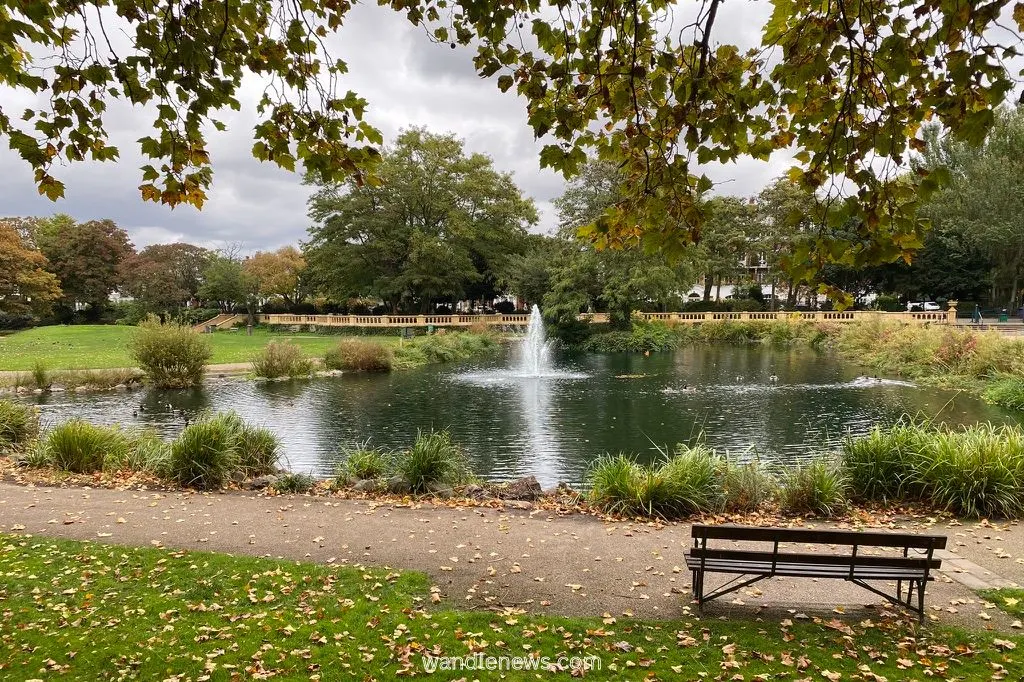
The part of the park which was Bishop’s Meadow, once had ferry trips that ran from the steps at each end. The photograph below shows the steps down to where the ferries once ran across the river in the 1950s. The “Penny Ferry” was regularly used by football fans on match days.
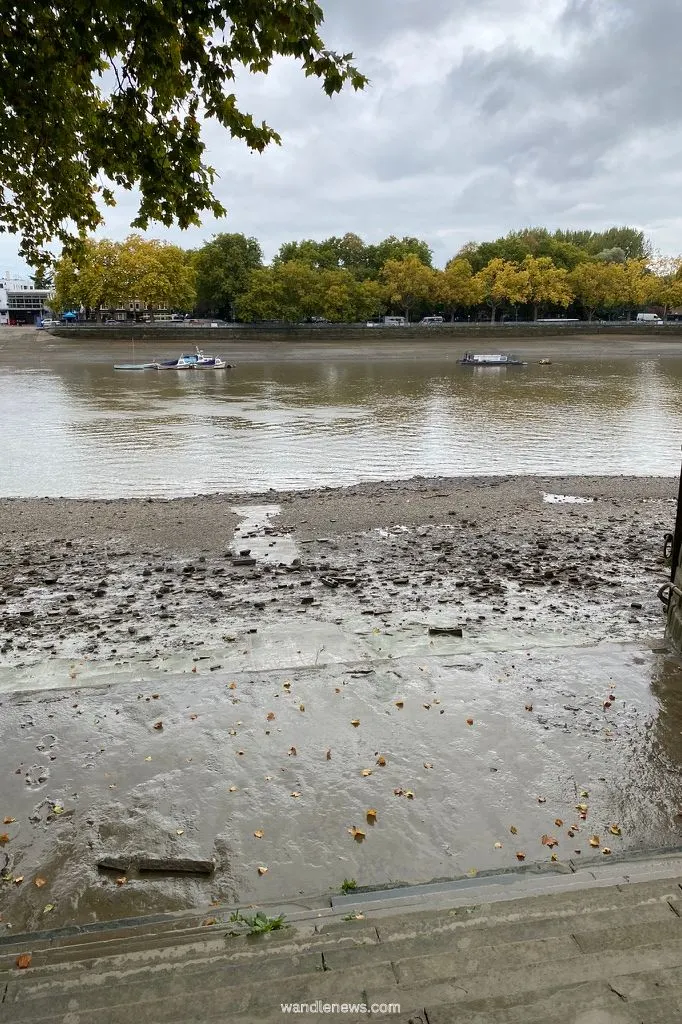
Fulham Palace
Fulham Palace is a Grade I listed building. It has medieval origins and was originally the main residence of the Bishop of London. The palace was the country home of the bishops from then eleventh century until 1973. Today it is still owned by the Church of England.
Fulham Palace has a large botanic garden which is situated next to Bishops Park. This garden is the second oldest botanic garden in London, after Chelsea Physic Garden.
Bishop Gindal started planting Fulham palace gardens around 1519, and is thought to have been the first to introduce the tamarisk tree to England.
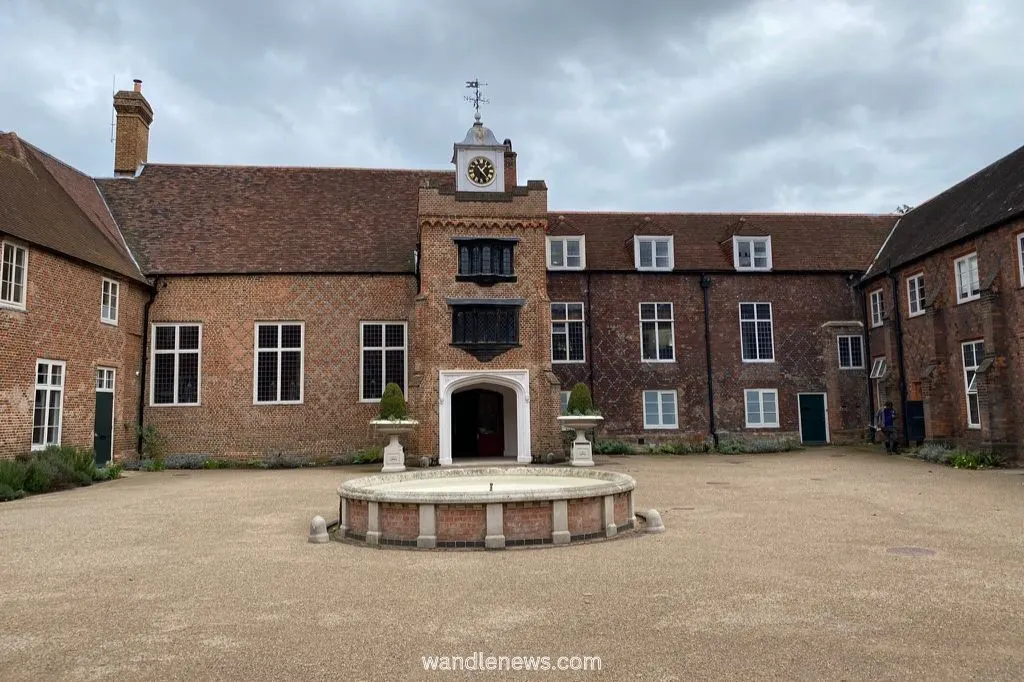
Putney Bridge
Putney Bridge was once known as Fulham Bridge. Today Fulham Bridge is the railway bridge that runs close to Putney Bridge, and carries the District Line.
Putney Bridge connects Fulham to Putney, and was originally constructed in 1729. It used to be a wooden bridge with tollbooths at each end. For many years it was the only bridge that existed between London Bridge and Kingston Bridge.
In 1879, the Metropolitan Board of Works bought Fulham Bridge. In 1880 they discontinued the tolls, and started rebuilding the bridge using Cornish granite. The new bridge was designed by the chief engineer to the Metropolitan Board of Works, Sir Joseph Bazalgette, who also designed Hammersmith Bridge.
The current Putney Bridge was opened by the Prince (later King Edward VII) and Princess of Wales on 29 May 1886.
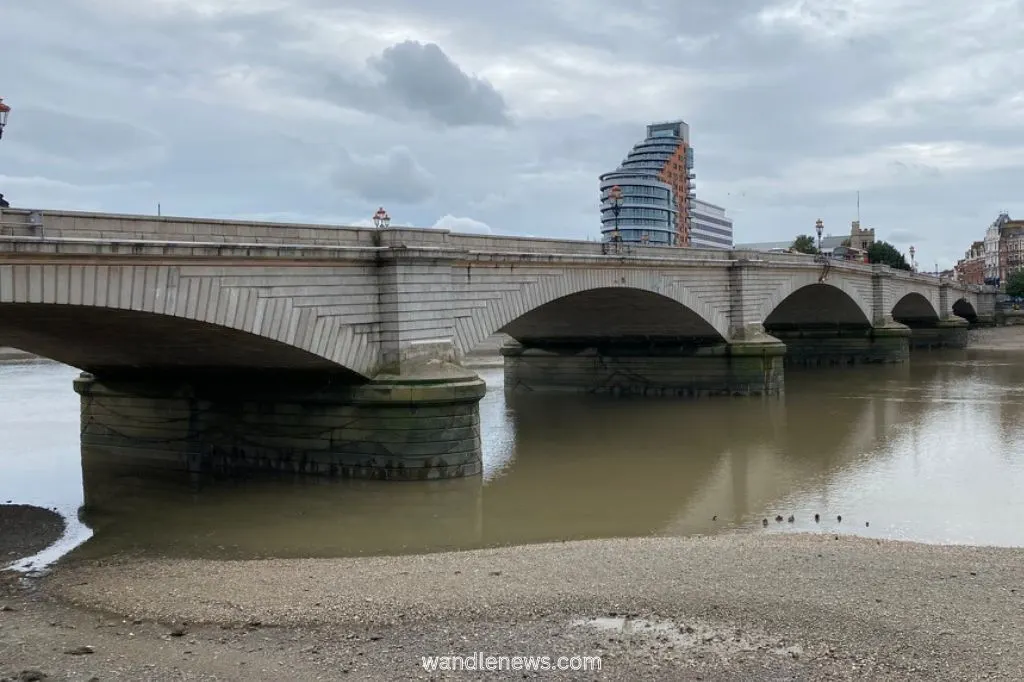
How to Get to the Start of the Walk
If you are starting the walk from Hammersmith Bridge, the easiest way to get there on public transport is to travel to Hammersmith Broadway tube station. If you want to do the walk in reverse, and have a Putney Bridge start, Putney bridge station is just a stone’s throw from the river bank.
South Side of the River
This post follows the north side of the river, however there are a number of points of interest on the south side of the river such as the London Wetland Centre, and Beverley Brook.
London Wetland Centre
The London Wetland Centre can be seen across the river, just before you get to Fulham Football Club. The wetlands centre is a nature reserve which opened in 2000, and is the first of its kind in London. It is home to rare wildlife such as bitterns, sand martins and lapwings. There are also eight species of bat, and a colony of water voles.
In the 19th century this land was originally reservoirs that were dug for Middlesex Water Works. Before that it was farmland belonging to the Barn Elms estate.
If you are interested in river wildlife, the Wandle Trail in South London is another good walk. It includes points of interest such as the Watermeads Nature Reserve in Mitcham, and Wandle Meadow Nature Park.
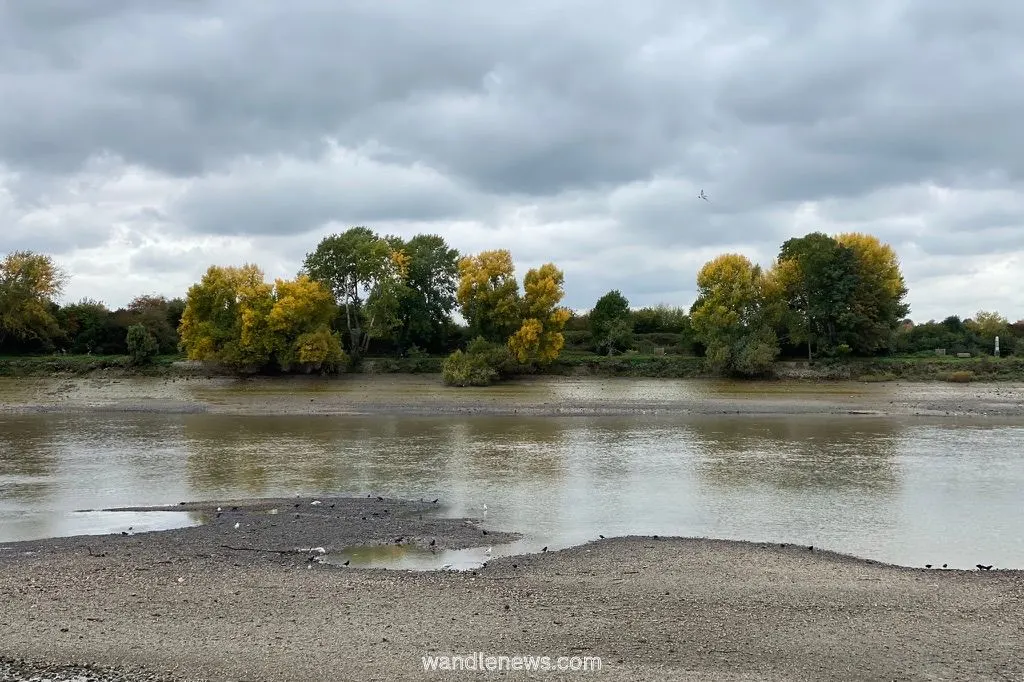
Beverley Brook
On the south side of the river you can see the point where Beverley Brook meets the Thames. Beverley Brook is one of the tributaries of the River Thames. You can find the confluence to the west of Leader’s Gardens.
FAQs
How far is it from Putney Bridge to Hammersmith Bridge?
The distance between Putney Bridge and Hammersmith Bridge is 2 miles.
Are there public toilets on this path?
Yes. There are public toilets in Bishops Park which is close to the Putney Bridge end of the walk, or in Hammersmith Broadway Shopping Centre, a short walk from Hammersmith Bridge.
Other London River Walks
Thames Path From Hammersmith to Putney
Thank you for reading my post about the Thames Path from Hammersmith to Putney. If you have taken this interesting walk, please leave me a comment below and let me know what you thoughts.

Teresa
Saturday 15th of October 2022
Loved reading your latest river walk . Such interesting history and references to famous people that have all contributed to the fascinating development of London over the years. We pass these buildings , parks bridges etc regularly without being aware of their rich history and characters that have left their imprint. More please
Teresa
Saturday 15th of October 2022
Loved this